One of the largest icebergs ever seen is even closer to breaking off Antarctica
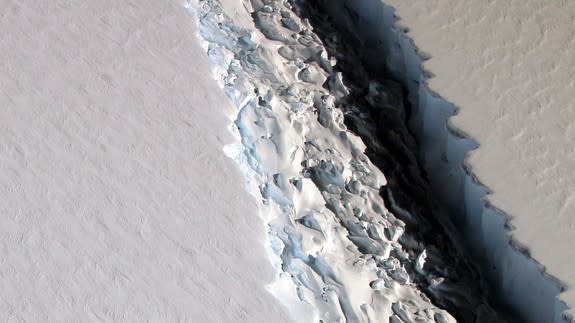
Just 6.4 miles of ice are holding an iceberg the size of Delaware onto the floating Larsen C Ice Shelf in Antarctica, and scientists warn it could cleave off the ice-bound continent at any time.
Researchers who closely monitor the crack cutting across this particular Antarctic ice shelf reported on Thursday that it continued to make rapid progress, expanding another six miles in just the past two weeks.
SEE ALSO: An iceberg the size of Delaware is about to break off Antarctica
This means that a collapse may be imminent, at which point, one of the top 10 largest icebergs ever observed will break away into the turbulent seas off the coast of the Antarctic Peninsula.
Scientists affiliated with a group that has been tracking the ice melt in this area, known as Project MIDAS, say the iceberg could measure 5,000 square kilometers, or 1,930 square miles.
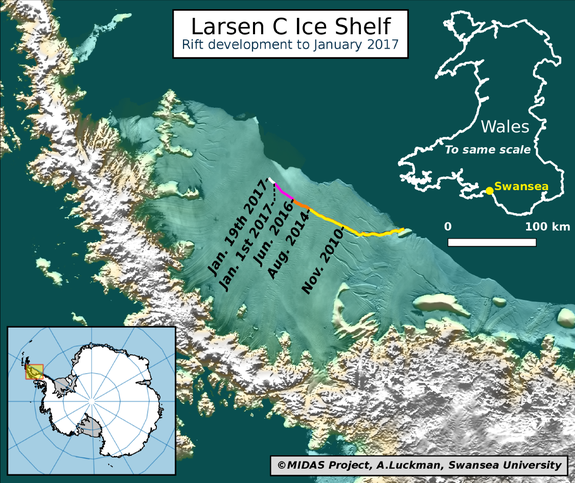
Image: Project midas/nasa
Scientists are worried that the calving event — which refers to the breaking off of the iceberg from the ice shelf — could speed up the disintegration of the broader shelf and land-based ice that lies behind it.
"When it calves, the Larsen C Ice Shelf will lose more than 10 percent of its area to leave the ice front at its most retreated position ever recorded; this event will fundamentally change the landscape of the Antarctic Peninsula," researcher Adrian Luckman wrote in a blog post.
"We have previously shown that the new configuration will be less stable than it was prior to the rift, and that Larsen C may eventually follow the example of its neighbor Larsen B, which disintegrated in 2002 following a similar rift-induced calving event," Luckman wrote.
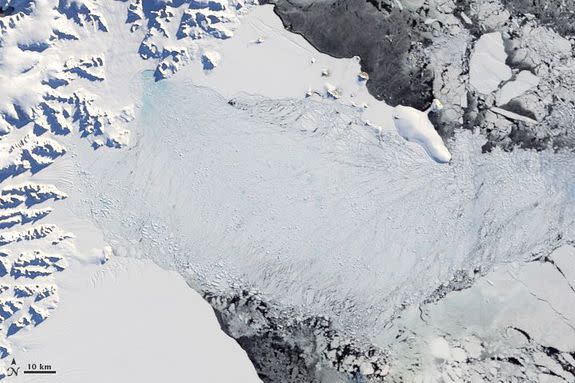
Image: NASA
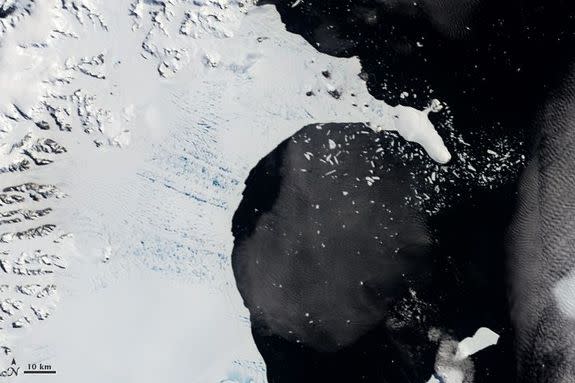
Image: nasa
The researchers found that the rift which had been progressing episodically across the floating ice shelf suddenly grew by 11.2 miles, or 18 kilometers, during the second half of December, leaving only 12.4 miles left connecting the iceberg to its parent ice shelf.
On Thursday, that length declined to 6.4 miles of ice remaining fully intact, which puts the ice shelf in an even more tenuous position.
Scientists are not sure exactly when the iceberg will break free, but they think it will occur soon.
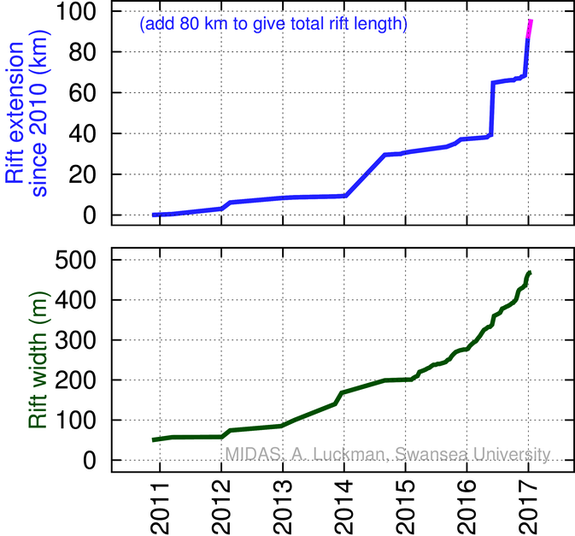
Image: Project midas
"We expect that the iceberg will break free within the next few months, although it's hard to be certain about timing," Martin O'Leary, a researcher at Swansea University in the U.K. who studies the Larsen C Ice Shelf as part of the MIDAS team, told Mashable in an email on Jan. 6.
Rifts like this are a natural phenomenon, but such large ones are rare, scientists say. They can destabilize larger parts of ice shelves and land-based ice sheets by exposing more ice to mild ocean waters and air temperatures. This has been happening in parts of the West Antarctic Ice Sheet, but it is not guaranteed to happen with Larsen C.
The Larsen C Ice Shelf is the most northerly of the remaining major Antarctic Peninsula ice shelves. This part of Antarctica has been warming rapidly in recent years, and the shelf is being undermined from below by warming ocean waters, as well as from above by increasing air temperatures.
View is of a rift in the Antarctic Peninsula's Larsen C ice shelf from our airborne survey of polar ice: https://t.co/VgjxopHHLI @NASA_ICE pic.twitter.com/gt5mpHqbxn
— NASA (@NASA) December 3, 2016
In 2002, Larsen C's neighbor, known as the Larsen B Ice Shelf, disintegrated entirely after a series of similar rift-induced calving events. The Larsen B calving event was featured in the opening scenes of the sci-fi climate change-related disaster film, The Day After Tomorrow.
Sea level rise implications
Floating ice shelves don't raise sea levels when they disintegrate or lose large icebergs. This is because their ice is already resting in the ocean, like an ice cube in a glass.
However, because they act like doorstops to the land-based ice behind them, when the shelves give way, the land-based glaciers can start sliding into the sea in a process that's difficult (if not impossible) to stop, long-term. It adds new water to the ocean — therefore, increasing sea levels.
The entire West Antarctic Ice Sheet contains enough ice to raise global sea levels by another 10 to 15 feet if it were all to melt. This process would likely take centuries, however, though sea level rise is already accelerating worldwide as glaciers melt and ocean temperatures increase.
